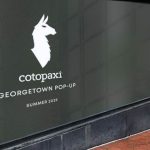Since launching the Capitol Hill trade initiative three years ago, OIAs Capitol summit has quickly become the most effective industry tool provided by the organization. This year, over 40 representatives from across the outdoor industry flew into Washington, D.C. to speak with members of Congress and their senior staff. The key issues this year focused on close to home recreation opportunities, preserving public land and international trade.
Perhaps the biggest improvement in OIAs approach to delivering the industrys message on Capitol Hill this year was the addition of The Active Outdoor Recreation Economy study. This study, which documents the various components of the outdoor industrys $730 billion annual contribution to the U.S. economy, allowed delegates to speak about the benefit of recreation opportunities for local economies. Nearly every attendee in D.C. this year agreed that this vital piece of research helped to open the eyes of several policy makers.
Some of the statistics that supported OIAs arguments include: the outdoor industry supports 6.5 million jobs nation wide; outdoor recreation generated $88 billion in tax revenues last year; and, the outdoor industry generated $289 billion in annual retail sales last year. This report not only helped to quantify the importance of national parks, national forests, and other public lands, but also helped to educate policy makers about the importance of maintaining the health of the outdoor industry.
The meetings held throughout the week focused on making sure that OIA is at the table during the decision making process whenever recreation lands are involved. Over the past several years, the consistency of the OIA staff on these issues has helped to ensure that this should be the case moving forward. Several policy makers were asking the executives who attended for input about issues involving the Forest Service, BLM and National Parks management.
While much of the recreation agenda revolved around educating Congress about the outdoor industrys economic contribution, there were several specific items on the agenda that were addressed.
The Stateside Land and Water Conservation Fund, which was designed by Congress 40 years ago to use offshore oil drilling revenues to pay for close-to-home recreation opportunities, was again zeroed out by the Bush administration in their annual budget recommendation. OIA went to Congress and asked for $125 million in funding for this program. The argument that outdoor recreation plays a crucial role in fighting the obesity epidemic helped the industry gain some valuable ground last year, and adding the economic message helped the industry take another step this year.
New to the agenda this year was the National Parks Service Centennial Challenge. This program, proposed by President Bush, recommends $2.3 billion in funding for the National Parks Service. This allotment would be the largest dollar amount increase ever proposed for the NPS. It also includes a 10-year plan to invest up to $3 billion in public and private money into the parks in advance of the 100th anniversary in 2016.
While OIA is in support of this proposal, there are some concerns. The program calls for $1 billion in donations from the public to be matched dollar-for-dollar by federal money. The industry has concerns about two issues namely commercial sponsorships entering the NPS and private money with strings attached to certain projects. In addition, several Democrats in Congress have raised concerns over turning the NPS into a fund raising service rather than an administrative service for the national parks.
The final conservation issue addressed was the BLMs National Landscape Conservation System. This system of 26 million acres consists of more than 5,000 miles of national and historic trails, National Monuments, Wild and Scenic Rivers, and several other protected attractions. These lands account for over 30% of all recreation use in the BLM and generate 40% of all usage fee revenues, but are only given 5% of the bureaus funding. OIA asked for $69 million in funding as opposed to the current $49.2 million.
The final item on the agenda was international trade, which had two dedicated lobby groups specifically addressing the issues the industry is facing. With this issue, the top priority was still to educate congress about the economic contribution of the outdoor industry, but there were also specific requests and points made. The first issue involves the U.S. monitoring Vietnam for potential anti-dumping duties, which could range from 5% to over 100% of wholesale costs. In addition, these duties could be placed retroactively, impacting the margins of goods that have already been sold. OIA members also spoke to the problems the industry has had with quotas on goods from China.
Essentially, member companies face several challenges with these quotas and duties. The biggest problem is that there is essentially no domestic production of many of the garments and footwear that OIA member companies produce. To support this claim, the U.S. International Trade Commission has initiated a study of the domestic manufacturing capacity of performance outerwear. Once this study is complete, OIA hopes to have legislative relief from trade barriers.
With so many complex matters impacting the industry, OIA staff does an excellent job of simplifying the issues, providing credible, meaningful data, and ensuring its members sit down with the right people to ensure that its message is heard.
>>> One notable addition to the OIA delegation this year was Patagonia, adding their much needed support for the first time…
>>> Each year, OIA is able to take this event to the next level. While there are still a few Congressional offices that need to be educated about the industrys mission, the vast majority of the staff and Congress knew about OIAs message and were able to offer help, constructive criticism or advice















